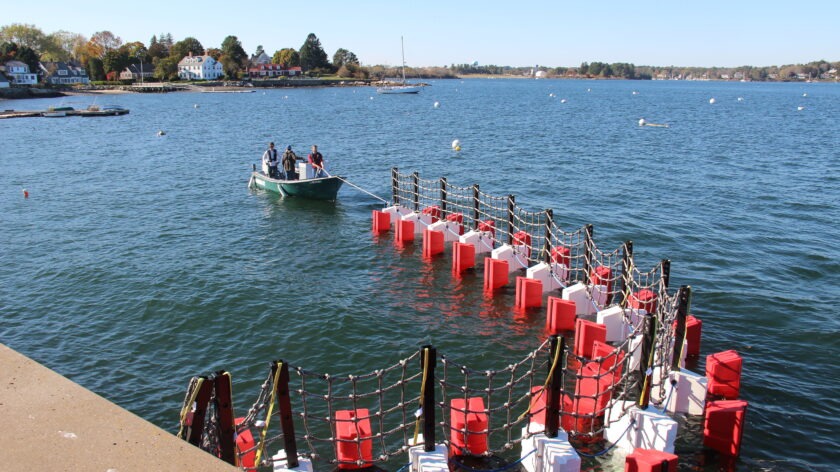Maritime Security Policy: Why Modular Barriers Should Be a Compliance Standard

In today’s rapidly evolving threat environment, maritime security is no longer an optional investment—it’s an operational necessity. From terrorist attacks to unauthorized vessel intrusion, the ocean is not as open or safe as it once was. Seaports, naval bases, oil terminals, and even luxury marinas are facing growing pressure to fortify their perimeters in line with international maritime security standards.
And yet, when we talk about maritime security policy, the conversation often centers around surveillance systems, personnel training, and digital defenses. What’s frequently missing is a focus on the physical layer of security—the first line of defense. This is where modular marine barriers should come into play, not just as an afterthought, but as a compliance standard in every maritime infrastructure plan.
Let’s explore why.
The Growing Threat Landscape on the Water
The maritime sector has always had its share of risks—piracy, smuggling, and environmental hazards among them. But in recent years, threats have become more sophisticated and asymmetric. We’ve seen small-boat suicide attacks, underwater IEDs, and unmanned surface vessels (USVs) used for sabotage.
The Red Sea, for example, has become a volatile arena for naval operations. In many global hotspots, energy terminals and military docks are vulnerable not because of weak policy, but due to a lack of physical deterrents. A drone or fast-moving boat can close in on a target within minutes—often before radar or human eyes can react.
Modular marine barriers offer a way to slow down, redirect, or stop these threats before they reach critical infrastructure. Their strategic use transforms passive waterfronts into protected perimeters that meet the growing expectations of ISPS, IMO, and local regulatory authorities.
Policy Needs to Catch Up to Physical Reality
While maritime policies are advancing—especially through organizations like the International Maritime Organization (IMO)—physical standards for vessel interdiction at sea are often ambiguous or outdated.
We have regulations that dictate the need for access control, but few global standards clearly prescribe how barriers should be used in ports or naval bases. The result? Too many ports rely solely on patrol boats or outdated boom systems that were never designed for today’s level of threat.
It’s time to shift our mindset: physical security is not just tactical—it’s regulatory. Modular marine barriers should become part of compliance frameworks, much like firewalls are in cybersecurity. Just as airports require fencing and security gates, ports should require verified and crash-tested marine barriers to meet international risk standards.
The Modular Advantage: Why This Design Matters
One of the most compelling aspects of modern barrier systems is their modularity. Unlike traditional static installations, modular barriers:
-
Scale easily — from small docks to large industrial ports
-
Deploy rapidly — ideal for both temporary and permanent setups
-
Integrate with technology — allowing for sensor, lighting, and surveillance connectivity
-
Resist impact — with independent crash-testing to stop high-speed boats
This flexibility means port authorities and naval planners can customize protection zones without redesigning the entire waterfront. For policy-makers, this presents an ideal infrastructure tool: modular barriers are predictable in function, adaptable in design, and measurable in performance—three things every regulatory framework values.
Real-World Readiness Meets Regulatory Compliance
Whether it’s a shipping terminal in the Arabian Gulf or a naval dockyard in Southeast Asia, the security profile of every maritime asset is under constant scrutiny. Insurers, military officials, and local regulators are all asking one question: What’s your physical protection plan?
Implementing modular marine barriers as a compliance standard would help answer that question with clarity. These systems create designated safe zones for docking, inspection, customs clearance, and high-profile vessel mooring—all without disrupting port flow.
Moreover, by adopting modular barriers as part of policy, regulators can standardize physical security audits, reward infrastructure investments with lower insurance premiums, and encourage technology-driven enhancements to traditional marine safety.
A Human-Centered Approach to Marine Security
At the heart of this conversation isn’t just steel, sensors, or compliance—it’s people. Port workers, crew members, law enforcement, civilians on ferry boats—all deserve to operate in safe, secure maritime environments.
By elevating modular marine barriers to the status of standard practice, we’re not just ticking a policy box. We’re reducing the chance of a catastrophic breach. We’re buying time for response. We’re making sure families of maritime workers sleep better at night.
Conclusion: Bridging the Policy Gap with Proven Solutions
If maritime security policy is to remain relevant, it must expand beyond digital systems and personnel training. Physical perimeter security—specifically, modular floating barriers—must become part of the standard regulatory toolkit.
The threats are real. The solutions exist. What’s needed now is for governing bodies, port authorities, and infrastructure developers to embrace modular barriers not just as an option—but as a requirement.
They’re affordable. They’re scalable. And most importantly, they work.
Halo Arabia, a trusted provider of modular marine security barriers, is proud to be at the forefront of this transformation helping ports, naval facilities, and coastal infrastructure prepare for the challenges of today and tomorrow.




